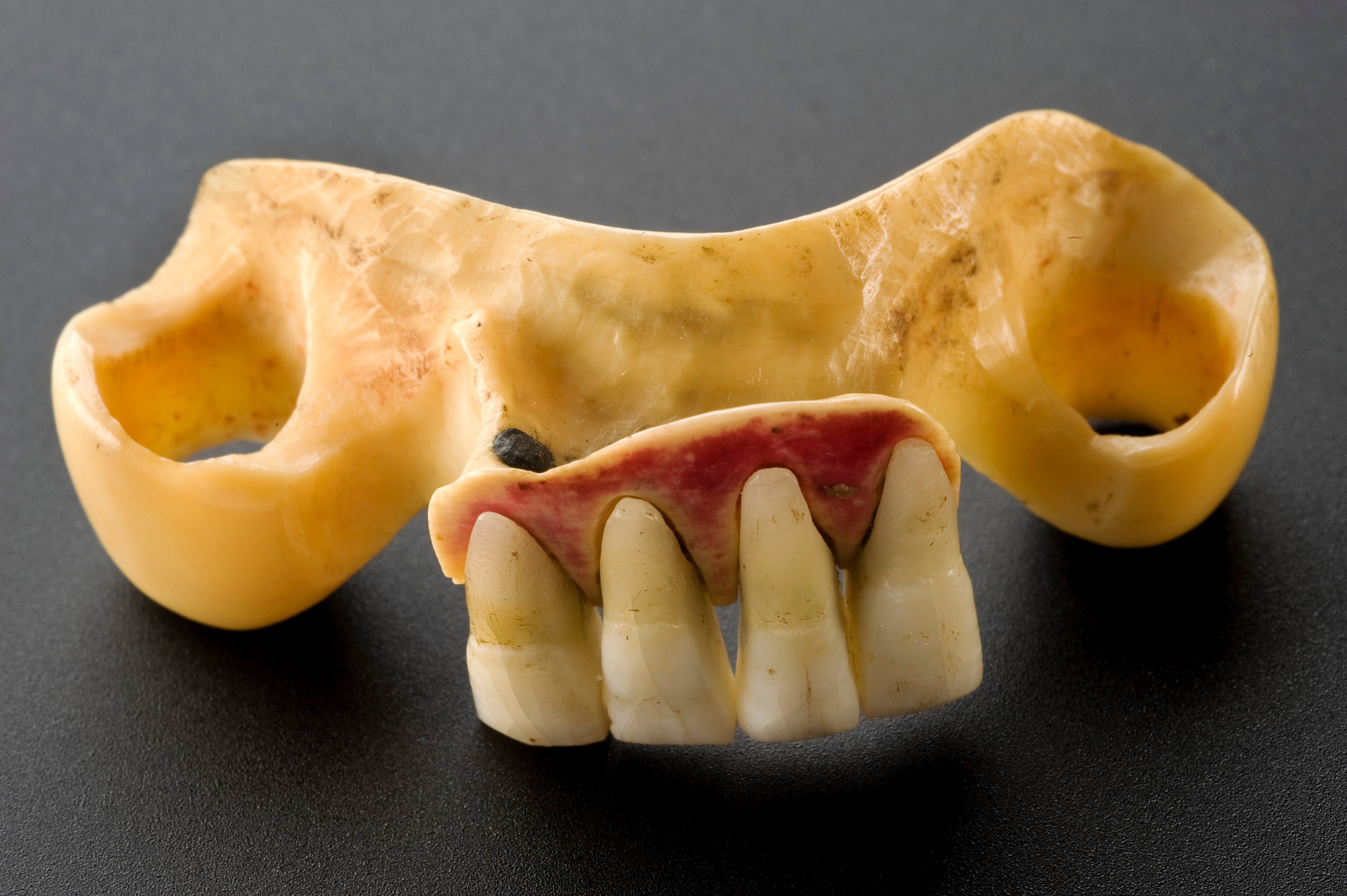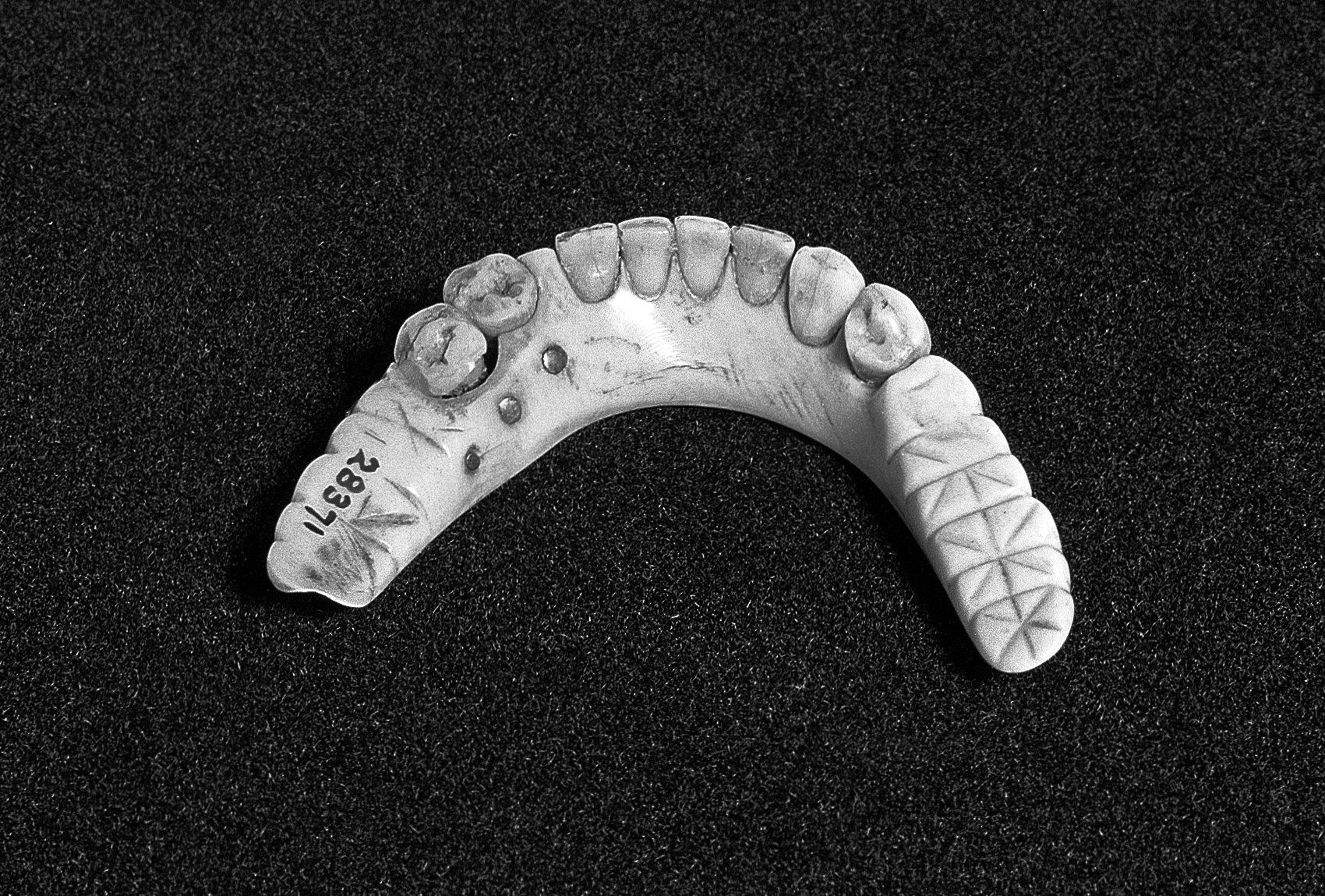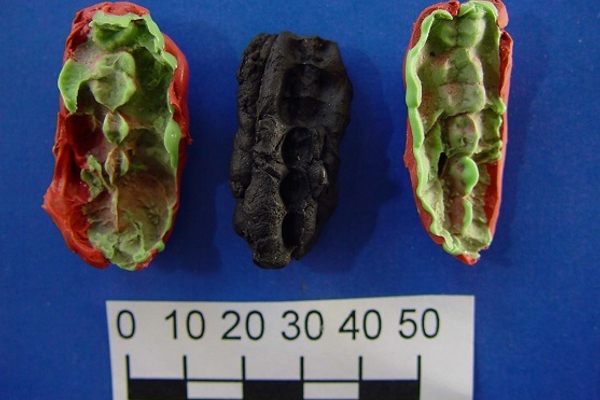When Dentures Used Real Human Teeth
“Waterloo teeth” represent a more ghoulish time in the history of dentistry.

Today’s dentures are expertly crafted oral prosthetics made from resins and synthetic materials. But in the dark ages of dentistry, wealthy people could turn to real human teeth to fill in gaps in their smiles.
Such ghoulish dentures are usually referred to as “Waterloo teeth,” thanks to the practice of yanking perfectly good teeth from battlefield casualties. No one is quite sure where that name originally came from, and it’s even a bit misleading. But none of that makes the history of humans filling their mouths with the teeth of other humans any less fascinating.
“It’s kind of a misnomer, because the Waterloo battle was in 1815, and human teeth were in use in dentures already,” says Andrew Spielman, associate dean for academic affairs at the NYU School of Dentistry. According to Spielman, human teeth had been used in dentures for at least a century before the Battle of Waterloo, and were routinely culled from battlefields since at least the French Revolution in the late 1700s.
Tooth replacement of some kind or another goes back to ancient times, using blocks of bone or animal teeth to replace lost or bad teeth. In earlier eras of dentistry, dentures and replacement teeth were used primarily for cosmetic purposes, instead of being designed to function as chewing tools.
Spielman says that the practice of using human teeth in dentures began largely because of the particular tastes of wealthy French aristocrats. “It was primarily because of the aesthetic demands of the nobility. The rise of modern dentistry after Pierre Fauchard [the father of modern dentistry], essentially led to the demand for human teeth,” says Spielman. Human teeth were thought to look better and be more comfortable than false teeth up to that point, which were often carved from bone, ivory, or animal teeth. Most sets of dentures from this time only included a handful of human teeth among other false parts.

Human teeth were sourced in a number of different ways. Some teeth came from the dentists themselves. Early dental procedures were often carried out by a wide range of tradespeople, from wigmakers to blacksmiths, who dabbled in fixing teeth on the side. Sometimes traveling dentists would set up in a market square and offer to pull teeth. “Not only rendering treatment, but collecting teeth for future cases. That was the norm even before battlefields provided abundant amounts,” says Spielman.
Teeth were sometimes collected by grave robbers, but during wartime, battlefields could provide a fertile hunting ground. After large battles, like those of the French Revolution and Waterloo, grimly opportunistic scavengers would descend on the scene, taking what they could, including teeth. As the BBC notes, molars were usually left alone because they were too difficult to remove and reshape.
No matter where they came from, human teeth would generally be hung on a string in sets and sold for relatively expensive prices. According to a 1795 price list from the Baltimore Telegraph provided by Spielman, just one uncut, unmounted tooth cost $7, a small fortune at the time.

America’s most famous denture wearer, President George Washington, had some human teeth in one of his sets of false teeth, and it’s possible he may have gotten some of them from the mouths of slaves. “Washington had seven or eight sets of dentures. He spent more money on his dental needs than on the medical needs for his entire family and his servants,” says Spielman.
The popularity of human-teeth dentures peaked in the 18th century, although replacement human teeth were still being sold well into the mid-1800s. The use of human teeth in dentures fell out of favor with the rise of more stable and customizable alternatives such as mineral paste replicas, and eventually, porcelain dentures. Like animal teeth before them, real human teeth were prone to putrefaction, so while they looked better, they didn’t do any favors for the wearer’s breath.
Today, the use of Waterloo teeth is a grimly fascinating footnote in dental history, but for Spielman, the nickname still leaves a sour taste in his mouth. “They were used even before that, which is why I have some objection as to why they would suddenly be called Waterloo teeth, when other battles have been used to collect human teeth,” he says. “The carnage that happened in 1815 yielded a larger amount of teeth than usual, but by 1815, there were [already] alternatives to human teeth.”

















Follow us on Twitter to get the latest on the world's hidden wonders.
Like us on Facebook to get the latest on the world's hidden wonders.
Follow us on Twitter Like us on Facebook